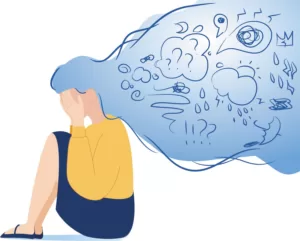What is Acupressure: Overview, Benefits, and Expected Results
Definition and Overview
Acupressure is an alternative medicine technique that involves applying gentle but firm pressure on certain sections of the hands and feet (sometimes including the wrists) that correspond to a body part that may be ill or feeling pain. This is a type of pressure point therapy that originated in China more than 4,500 years ago.
Some people tend to confuse acupressure with acupuncture. Both are the same in terms of principle. They stem from the belief that the body has qi (energy flow), from which life force comes from. In an ideal healthy body, qi should be able to circulate the body freely.
However, there are times when the circulation or flow of energy is stopped or blocked. When this happens, the body goes into an imbalanced state, which then leads to a variety of symptoms such as pain and diseases.
Acupressure and acupuncture use different methods in addressing the condition. Acupuncture uses fine point needles that are inserted into meridians to remove the blockage and improve the energy flow.
Although acupuncture has been proven to be helpful in treating or managing chronic pain and migraines, some believe that acupressure is better in terms of safety. With acupuncture, needles may lead to a punctured lung or increased risk of infection. These scenarios, though, are more likely when the acupuncturist is not well trained or inexperienced.
In acupressure, fingers are mostly used. However, others have defined acupressure as applying pressure to a trigger point. This means that objects like a weighted ball taped on the wrist may also be used. Others are also utilizing uneven stony paths or pressure mats for the feet.
Who should undergo and expected results
Acupressure is ideal for people who are under a lot of stress. Pressure point therapy can help ease the tension of the muscles as well as relax the body, thereby lowering the heart rate and blood pressure.
It may also be recommended for those who have poor blood circulation. Often, the extremities, especially the feet, may feel cold even at regular temperatures. Pressing can enhance the circulation of blood around the body.
Acupressure is believed to boost the immune system. It can assist in the detoxification by allowing the lymphatic system to drain fluids that may be carrying cellular by-products and other wastes. Further, with a better blood circulation, nutrients can reach the cells promptly, where they can be used for the necessary metabolic functions that sustain life.
Others have claimed that the procedure can help in weight loss, fertility, and anti-aging as it promotes better skin quality and tone.
Acupuncture and acupressure can also be particularly helpful in treating and managing both acute and chronic pain. It can work against migraines, different kinds of headaches, abdominal cramps, and stiff neck, to name a few.
Acupressure is not recommended for pregnant mothers since it may stimulate premature contractions of the uterus. Anybody who’s been diagnosed with an underlying disease or condition such as cancer should consult with the doctor before undergoing acupressure.
The results of acupressure are varied depending on several factors such as the severity of the condition, the illness, the age of the patient, and the level of expertise of the therapist. It is noted to be effective in pain and symptom management such as nausea and headache.
It may take a few sessions before the desired results can be achieved. There are also times when it doesn’t cure the symptom or illness but may help make it become more manageable. Acupressure can be used alongside other alternative treatments like reiki, tai chi, and acupuncture.
How the procedure works
Acupressure is often done in a clinic and is performed in conjunction with other therapies such as massage. It begins with an initial consultation where the patient identifies specific pained areas so the therapist can make the treatment more targeted. Then, the patient is asked to sit on a chair comfortably or lie on a massage table.
The procedure then starts. The specialist may perform either a reinforcement or a reduction of energy. The latter means that the blockage of energy is removed while the former implies increasing the energy so it reaches the point of influence.
Often, fingers and sometimes fingernails are used to press the trigger point. The pressing may take at least 30 seconds, although some may already experience some relief or positive change less than that time. If the fingers are too thick, it may be necessary to press longer or to use a blunt object to perform the procedure more effectively.
The entire process may take at least an hour, after which, both the patient and the specialist proceed to feedback. The specialist assesses the immediate effects of the procedure on the patient so adjustments can be made in the next sessions, if there’s any.
Possible risks and complications
So far, there’s no known risk of acupressure. Nevertheless, it’s important to know that the technique is unregulated as there’s no governing body that provides certifications. Some states, however, may request alternative practitioners to acquire health-care-related licenses.
References:
- American Cancer Society: “Acupressure, Shiatsu, and Other Asian Bodywork.”
- American Pain Foundation: “Treatment Options: A Guide for People Living with Pain.”
- NIH NCCAM: “Energy Medicine: An Overview.”
- Natural Standard: ”Acupressure, shiatsu, tuina,” 2013.
/trp_language]
## What is Acupressure?
Acupressure is a traditional Chinese medicine technique that uses the application of fingertip pressure to specific points on the body to promote physical and mental well-** Acupoints** are located along energy channels, or meridians, in the body. By stimulating these points, practitioners aim to improve the flow of * ** in the body and promote self-healing.
### How Does Acupressure Work? *
According to traditional Chinese medicine, ** blockages** can lead to imbalances in the body, resulting in pain, disease, and other health problems. Acupressure is thought to **Acupoints** to clear these blockages, promote the flow of * **, and restore balance to the body.
### What are the Q & A on Acupressure
**Q1.What are the acupuncture points called?**
**Answer **.Acupoints are located along energy channels, or meridians, in the body.
**Q2. What are the benefits of Acupressure?**
**Answer**.Acupressure can provide several benefits, including:
**1.Pain Relief:** Acupressure has been shown to be effective in relieving pain in various body parts, such as the back, neck, and headaches. It can work by blocking painsignals or by stimulating the body’s natural painkillers.
**2.Stress Reduction:**Acupressure can help reduce stress and promote relaxation. It can calm the mind and improve sleep patterns.
**3. Improved Mood:** Acupressure can help improve overall well- being and balance by regulating ** and **
**4.Boosting Energy Levels:** Acupressure can help boost energy levels, making it a good choice for people who feel fatigued often.
**Q3. What are the technique used in acupressure?**
**Answer** .Acupressure practitioners may use different techniques to apply pressure to the acupoints, including:
**1. Direct**. Press. Using the fingertips to apply direct pressure to the acupoints.
**2. Rotating**. Mass. Gently rotating the fingertips in a circle on the acupoints.
**3. T.** Gently tapping on the acupoints.
**4. Sw.** Gently rubbing the acupoints in an up-and-down or side-to- side motion.
**Q4. ** How long does it take to feel the effects of Acupressure?**
**Answer** .The effects of Acupressure can vary depending on the individual and the condition being treated. Some people may feel the effects immediately, while others may need several treatment to notice a difference.
**Q5**. How often should one receive acupressure?
**Answer** .The frequency of acupressure may vary depending on individual needs and the condition being treated. For general well- being and some common health conditions once to twice a week may be appropriate. For more severe or chronic health problems, more sessions may be necessary.
**Q6** .Is acupressure safe?
**Answer**.Acupressure is generally considered safe when done by a recognized practitioner.
### What are the precautions to be taken during Acupressure?
* Pregnancy ** – Acupressure should be done cautiously during pregnancy, especially during the first trimester.
* Bleeding**- Acupressure should be done very carefuly if you haveBleeding disorders or are taking blood thinners.
Acupressure is a safe and effective way to promote physical and mental well-** on your Acupressure journey today!
**Disclaimer:** The information is intended for general and informationaldo not take it as a professional medical accurate or suitable for any specific purpose, always a health practitioner or a doctor for any medical condition or treatment.
One comment
Leave a Reply
Popular Articles








What is Acupressure: Overview, Benefits, and What to Expect